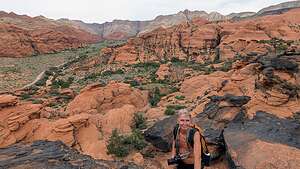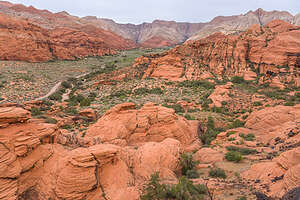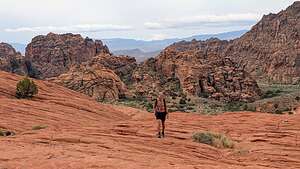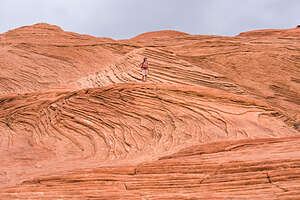- Home
- About
- Map
- Trips
- Bringing Boat West
- Migration West
- Solo Motorcycle Ride
- Final Family XC Trip
- Colorado Rockies
- Graduates' XC Trip
- Yosemite & Nevada
- Colorado & Utah
- Best of Utah
- Southern Loop
- Pacific Northwest
- Northern Loop
- Los Angeles to NYC
- East Coast Trips
- Martha's Vineyard
- 1 Week in Quebec
- Southeast Coast
- NH Backpacking
- Martha's Vineyard
- Canadian Maritimes
- Ocracoke Island
- Edisto Island
- First Landing '02
- Hunting Island '02
- Stowe in Winter
- Hunting Island '01
- Lake Placid
- Chesapeake
- Provincetown
- Hunting Island '00
- Acadia in Winter
- Boston Suburbs
- Niagara Falls
- First Landing '99
- Cape Hatteras
- West Coast Trips
- Burning Man
- Utah Off-Roading
- Maui
- Mojave 4WD Course
- Colorado River Rafting
- Bishop & Death Valley
- Kauai
- Yosemite Fall
- Utah Off-Road
- Lost Coast
- Yosemite Valley
- Arizona and New Mexico
- Pescadero & Capitola
- Bishop & Death Valley
- San Diego, Anza Borrego, Joshua Tree
- Carmel
- Death Valley in Fall
- Yosemite in the Fall
- Pacific Northwest
- Utah Off-Roading
- Southern CA Deserts
- Yosemite & Covid
- Lake Powell Covid
- Eastern Sierra & Covid
- Bishop & Death Valley
- Central & SE Oregon
- Mojave Road
- Eastern Sierra
- Trinity Alps
- Tuolumne Meadows
- Lake Powell Boating
- Eastern Sierra
- Yosemite Winter
- Hawaii
- 4WD Eastern Sierra
- 4WD Death Valley +
- Southern CA Deserts
- Christmas in Tahoe
- Yosemite & Pinnacles
- Totality
- Yosemite & Sierra
- Yosemite Christmas
- Yosemite, San Diego
- Yosemite & North CA
- Seattle to Sierra
- Southwest Deserts
- Yosemite & Sierra
- Pacific Northwest
- Yosemite & South CA
- Pacific Northwest
- Northern California
- Southern Alaska
- Vancouver Island
- International Trips
- Index
- Tips
- Books
- Photos/Videos
- Search
- Contact
Snow Canyon State Park, UT
Sunday, June 1, 2025 - 5:45pm by Lolo
264 miles and 4.5 hours from our last stop - 1 night stay
Travelogue
 Our campsiteMoonscape was our last planned stop on our Utah adventure, but since we had a 15-hour drive home, we decided to break it up, squeezing in one more place in Utah that we had never been to before - Snow Canyon State Park, another southwestern Utah red rock wonderland.
Our campsiteMoonscape was our last planned stop on our Utah adventure, but since we had a 15-hour drive home, we decided to break it up, squeezing in one more place in Utah that we had never been to before - Snow Canyon State Park, another southwestern Utah red rock wonderland.
Located near the town of St. George, Snow Canyon boasts 7,400 of red and white Navajo sandstone cliffs and ancient black lava flows. Oh, and there’s even an ancient wind-blown sand dune that solidified into stone, called the petrified dunes.
.thumbnail.jpg) White Rocks AmphitheaterSounded great to us, and hardly off our route home, so off we went, hoping to discover a new Utah gem.
White Rocks AmphitheaterSounded great to us, and hardly off our route home, so off we went, hoping to discover a new Utah gem.
Fortunately when we arrived around 3 pm, there were still a few campsites available, and the ranger was nice enough to give us the very best one - site 27, a large private site set against the backdrop of the red cliffs.
It was a little too late to start a long hike, so we just drove north on the scenic drive through the park and out the north entrance to the trailhead for the short hike to the White Rocks Amphitheater.
 Snow Canyon OverlookFrom the trailhead we hiked down to the base of a rocky escarpment and then scrambled up and along slickrock, eventually finding ourselves standing in what looked like a large bowl or “amphitheater.”
Snow Canyon OverlookFrom the trailhead we hiked down to the base of a rocky escarpment and then scrambled up and along slickrock, eventually finding ourselves standing in what looked like a large bowl or “amphitheater.”
Although the name might imply a man-made structure, this “amphitheater” is actually an example of a fossilized ancient sand dune, formed over 195 million years ago when layers and layers of sand were deposited here by ancient winds.
 Setting off on the Pinyon TrailGradually (in geological time), these accumulated sand layers became compacted and cemented together, undergoing a process called petrification, which transformed the loose sand into solid sandstone.
Setting off on the Pinyon TrailGradually (in geological time), these accumulated sand layers became compacted and cemented together, undergoing a process called petrification, which transformed the loose sand into solid sandstone.
The beautiful swirling patterns that we were scampering over are the result of these ancient wind-blown sand layers, a geological feature known as "angular cross-bedding."
 Climbing up to Pinyon Canyon OverlookSo, why is this rock formation white, rather than red like all the other rock in Snow Canyon? The leading hypothesis is that the iron oxide that makes rock red was leached out of this particular rock formation by hot groundwater and heat generated from nearby volcanic eruptions that occurred more recently.
Climbing up to Pinyon Canyon OverlookSo, why is this rock formation white, rather than red like all the other rock in Snow Canyon? The leading hypothesis is that the iron oxide that makes rock red was leached out of this particular rock formation by hot groundwater and heat generated from nearby volcanic eruptions that occurred more recently.
But nature didn’t stop there. Once the sandstone was formed, wind and water sculpted the rock over millions of more years, carving out the “bowl” or “amphitheater” shape that we were standing in today.
 Atop the Hidden Pinyon OverlookIt was a nice contrast to the predominantly red rock landscape we had been traveling through all week.
Atop the Hidden Pinyon OverlookIt was a nice contrast to the predominantly red rock landscape we had been traveling through all week.
Before returning to the campground, we drove a little further down the road outside the park to an overlook that provided an expansive view down into the main Canyon - a wonderland of red rock to explore tomorrow morning.
Then it was back to our campsite to relax in our own private little red rock surroundings where Herb made our go-to Mountain House Pad Thai.
 View from Hidden Pinyon OverlookThe next morning we set out pretty early on the Hidden Pinyon Trail, which conveniently began right across the road from our campground.
View from Hidden Pinyon OverlookThe next morning we set out pretty early on the Hidden Pinyon Trail, which conveniently began right across the road from our campground.
It’s a self-guided nature trail, with marked numbered posts that correspond to a brochure that describes the geology and the flora near each post. I’m a bit embarrassed to admit that we ignored the brochure and charged on.
The trail was quite lovely, winding through rocky passages, across sandy stretches, and through small canyons filled with pinyon pines, creosote bushes, and cacti.
 Hiking up the Petrified DunesA little less than a mile into our hike, we hung a left onto the spur trail to the Hidden Pinyon Overlook. The trail led us into a “hidden canyon” area and then a rock scramble up to the top of a bluff from which we were treated to sweeping panoramic views of the Snow Canyon.
Hiking up the Petrified DunesA little less than a mile into our hike, we hung a left onto the spur trail to the Hidden Pinyon Overlook. The trail led us into a “hidden canyon” area and then a rock scramble up to the top of a bluff from which we were treated to sweeping panoramic views of the Snow Canyon.
Because of the cloud cover, which had made for comfortable hiking temperatures, the usually vibrant red rock was muted in a softer light, more of a salmon color, which we actually found quite lovely. It’s amazing how light can make such a difference in the appearance of these rocks.
 The Petrified DunesOnce back on the main Hidden Pinyon Trail, we soon connected with the Red Sands Trail, named for its stretches of vibrant red sand.
The Petrified DunesOnce back on the main Hidden Pinyon Trail, we soon connected with the Red Sands Trail, named for its stretches of vibrant red sand.
At about 1.5 miles into our hike, we arrived at the Petrified Dunes, another fossilized ancient sand dune like the White Rocks Amphitheater we had hiked to last night.
They were formed in a similar fashion, but unlike the White Rock Amphitheater, the iron oxide had not been leached out of the Navajo Sandstone of this one, so it retained its salmon to reddish color.
 Bye bye Snow CanyonThe beautiful swirling patterns in the rock are the result of these ancient wind-blown sand layers, a geological feature known as "angular cross-bedding."
Bye bye Snow CanyonThe beautiful swirling patterns in the rock are the result of these ancient wind-blown sand layers, a geological feature known as "angular cross-bedding."
There was no defined trail up the dune. Instead of cairns, we followed what looked like helmets with arrows on them to mark the direction to get to the top.
It was hard to believe that this was once a sand dune. Have I mentioned that Mother Nature is pretty amazing?
Once over the dune, we walked back to the campground on the paved Whiptail trail, which traced the park’s scenic drive.
Snow Canyon had far exceeded expectations.
- ‹ previous
- 7 of 7
Snow Canyon State Park location map in "high definition"
Javascript is required to view this map.
